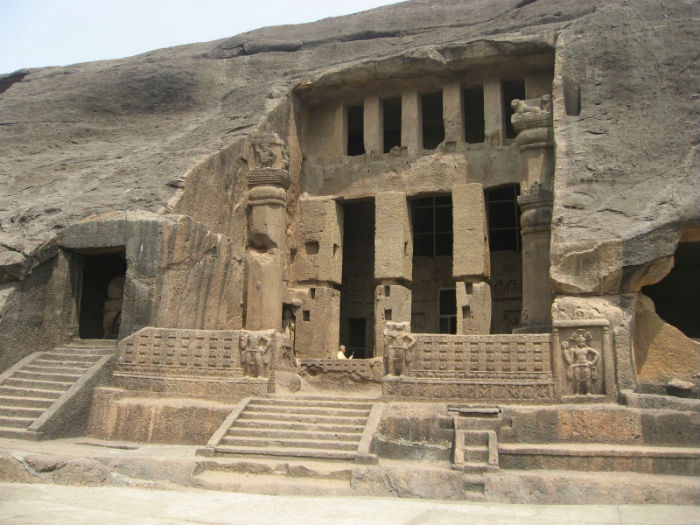Last Updated on 16/12/2023
These well-known monumental caves are a cluster of rock cut monuments. It is located deep in the lush green pristine forests of the Sanjay Gandhi National Park. This nature reserve is situated towards the north of Borivali, in the western outskirts of Mumbai, India. Distance wise it is 7 km away from Borivali railway station and 6 km from the National park gate. Tourists are allowed inside the park after 7:30am. Transport to the caves is available by bus every hour.
Kanheri caves depict the Buddhist influence on the art and culture of India. The word Kanheri is from the Sanskrit word ‘Krishnagiri’ which generally means black in color. These caves were designed from a huge basaltic rock formation.
History:

The origin of the caves is from the first century BCE to the ninth century BCE. A Hundred and nine caves have been carved in the basalt rocks. A stone plinth adorns each cave as a bed. These caves are very different when compared to the elegant nearby Elephanta caves.
The Buddhist shrine known as stupa is founded in the congregation hall which has huge stone pillars. As you go up the hills, there are remains of ancient canals, cisterns and water systems. These collected and channeled the harvested rainwater into huge reservoirs.
As the caves became Buddhist monasteries intricate carvings of Buddha and bodhisattvas were made in the cave walls. It was a crucial Buddhist monastery in the Konkan coastal region in the third century AD.
In most of these caves Buddhist monks lived, studied and practiced meditation. The large caves were called Chaityas which were the congregational worship halls. Rock cut stupas, intricate Buddhist pillars, sculptures and reliefs lined the walls of the Chaityas for worship. The most important figure is of Avalokiteshvara. He is a bodhisattva who encompasses the compassion of all the Buddha. He is widely worshiped in Mahayana Buddhism.
These caves provide clues to the once well-established world of Buddhist monks. It was connected to trade centers such as ports of Kalyan, Nasik, Paithan, Sopara, and Ujjain. During the time of Kushan and Mauryan Empire, Kanheri was a university center. Also in the later tenth century, Atisha, the Buddhist teacher came to Kanheri to practice Buddhist meditation under Rahul Gupta.
Drawings and Inscriptions:
In Kanheri inscriptions are found in the ancient languages of Devanagari, Brahmi. Fifty one inscriptions are found at Kanheri. Three Pallavi epigraphs are seen in the cave 90. In all there are twenty six epigraphs. In one crucial inscription marriage of the daughter of Rudradaman with Satavahana ruler Vashishtiputra Satakarni is craved.
Suggested Tours


 Call
Call WhatsApp
WhatsApp Enquiry
Enquiry